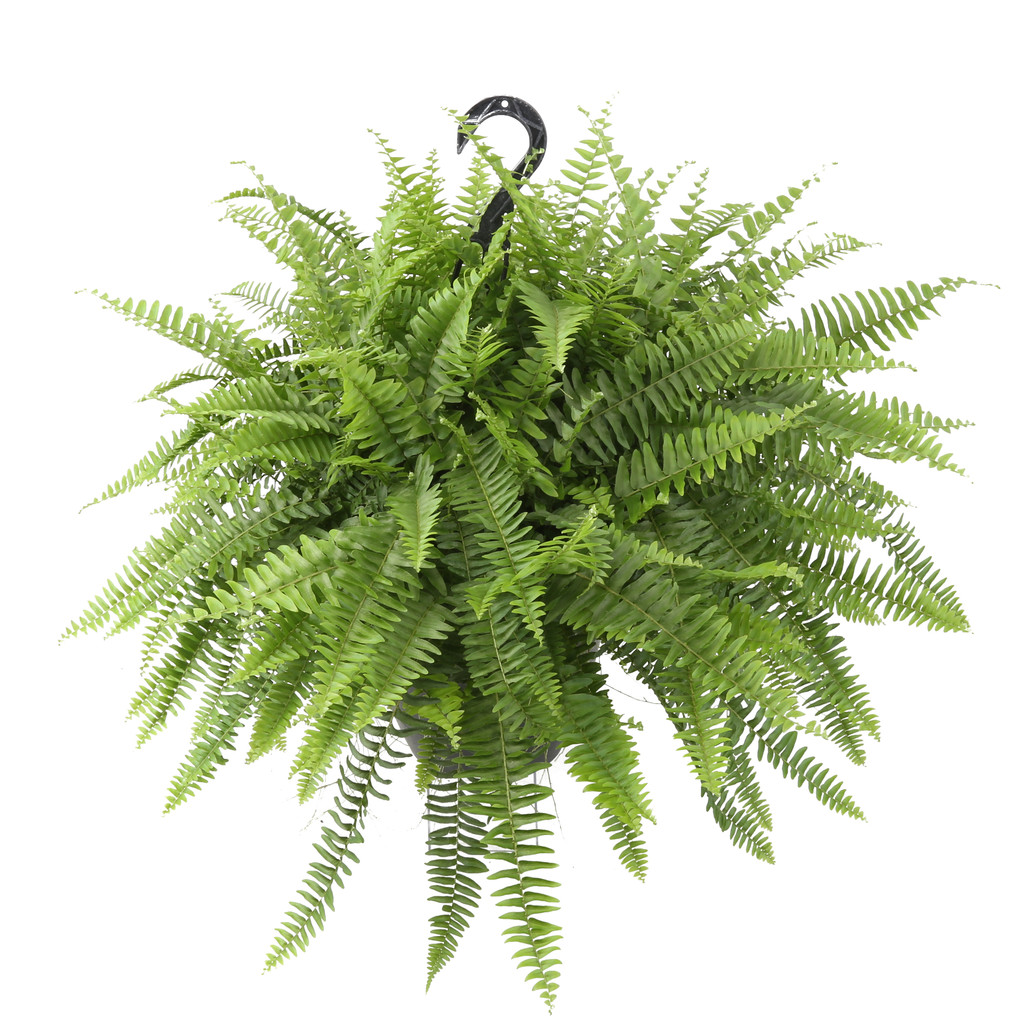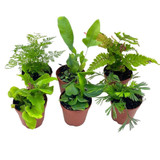
Fern Boston Fern Hanging Basket
Boston Fern
Assorted
10"-11" in a Hanging Basket $50
Nephrolepis exaltata, known as the sword fern or Boston fern, is a species of fern in the family Lomariopsidaceae, native to tropical regions throughout the world.
Boston ferns are the perfect porch plant, as they thrive in lots of indirect light.
Morning sun is ideal, as full afternoon sun can burn the fronds.
Compared to other types of ferns, the Boston Fern offers gardeners easy maintenance, and good growth during the spring and summer season.
Boston ferns grow well in a variety of lighting and soil conditions, and they're easy to propagate and plant around your garden.
Ferns are a very common plant, used both inside as houseplants and as garden foliage.
Dating back to prehistoric times, ferns exist in tens of thousands of species.
They range in appearance from airy and light to dense and bushy, but their care and needs remain similar.
In general, ferns are low-maintenance and hardy, but they do require a bit of upkeep in order to grow luscious and large.
Choose the right location.
Ferns require lots of shade and ambient (rather than direct) sunlight.
Place your plant near a north-facing window - east and west windows let in too much direct sunlight.
You can put your fern next to a south-facing window if a north-facing window isn’t available.
Keep the plant a bit away from the window, so that it receives more ambient light.
Keep the humidity high in proximity to your fern.
High moisture levels in the air are perfect for humidity-loving ferns.
There are two ways you can create higher humidity levels for your fern: double-pot your fern, or add a humidifier to your room.
To double pot your fern, select a second pot slightly larger than the pot your ferns are planted in.
Fill the pot with moss heavily soaked in water, and then place the second pot inside.
Cover the top of the soil and the rim of the inner pot with the soaked moss, and wet it every few days to make sure it is still moist.
If you use a humidifier, place it near your fern for the best growth.
You can mist your BF with a misting bottle and lukewarm water, but this should only be done every few days, because it can cause spotting.
Keep the temperature constant.
Most indoor species of ferns are tropical, although not all require tropical weather.
Make sure that the temperature in your home (or at least the room in which the fern is kept) is near 70 °F.
The ferns can handle temperatures as low as 60F, but they won’t thrive as well under low temperature conditions.
When in doubt, turn the temperature up.
Consider placing your fern in a bathroom - the temperature and humidity are often higher as a result of showers and baths.
Water regularly.
Ferns love a humid atmosphere, but they also prefer moist soil as well.
Make sure that your fern’s potting mix is always damp (but never soaking).
This may mean you water a small amount on a daily basis, rather than heavy amounts irregularly.
Fertilize your ferns once a month.
Find a house plant fertilizer that specializes in species like ferns.
Spray this fertilizer onto your ferns on a monthly basis to provide nutrients that the potting mix lacks.
You should wait six months after you’ve potted your fern to start fertilizing it.
Whenever you bring a new plant home, it is wise to refrain from adding any fertilizer for at minimum a month or two, so your new arrival can get acclimated - like a kitty cat or puppy!
We do not warranty or guarantee any living plant. No returns or exchanges on live plants. All sales are final on live plants.
For more information please see our Terms and Conditions








